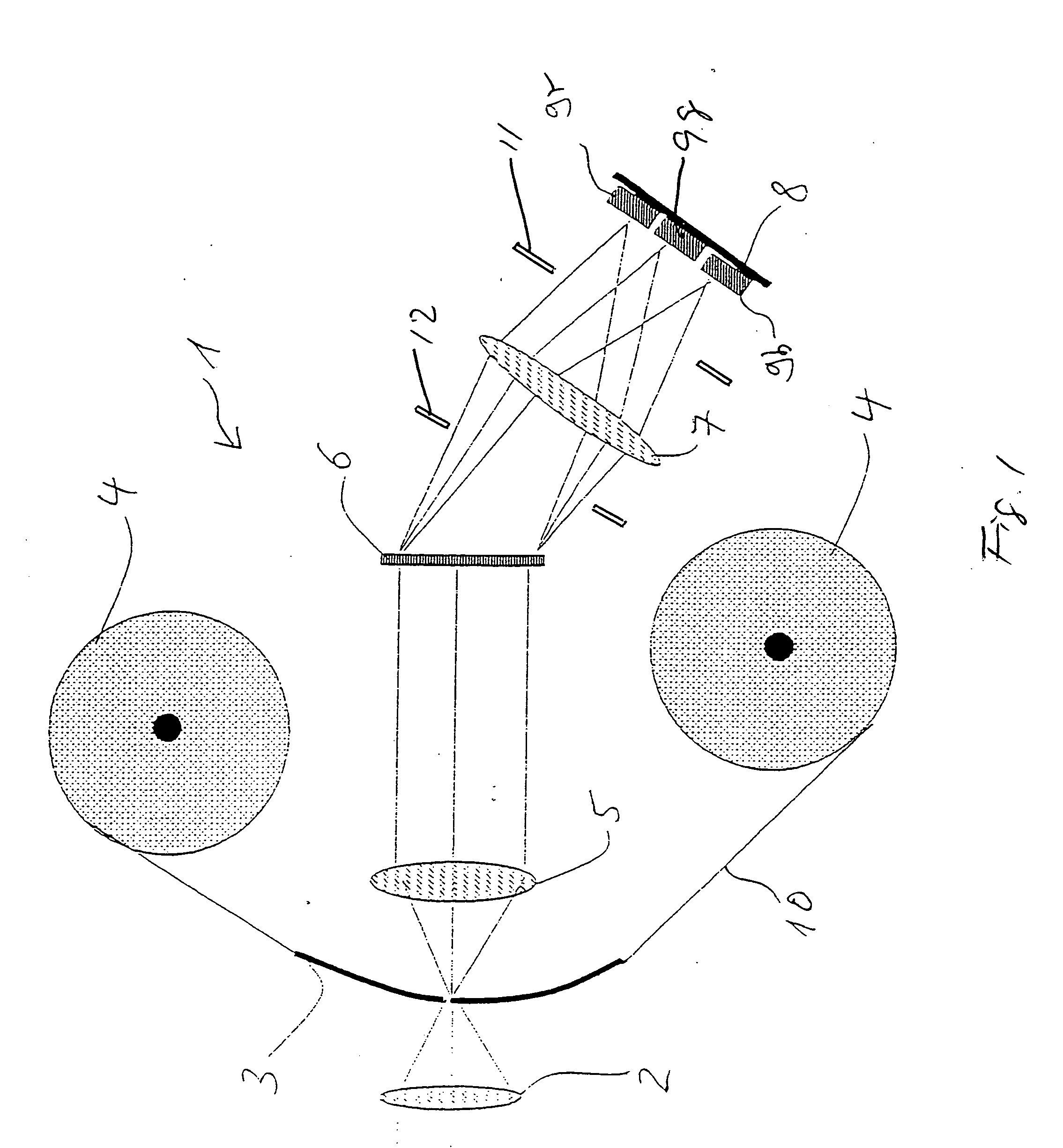Film scanner for color originals
a color original and film scanner technology, applied in the field of color original film scanners, can solve the problems of difficult to compensate for the loss of intensity, playback errors, and r, g and b images of a scene recorded chronologically, and achieve the effect of narrowing down the green region
- Summary
- Abstract
- Description
- Claims
- Application Information
AI Technical Summary
Benefits of technology
Problems solved by technology
Method used
Image
Examples
Embodiment Construction
[0018] The invention is explained in greater detail below on the basis of a preferred exemplary embodiment.
[0019] As shown in FIG. 1, the film scanner 1 comprises a source of white light (not shown), a first projection lens 5, a film stage 3, a film drive 4, a second projection lens 7, a spectrum-splitting element 6, a third projection lens 2, and a focal plane 8, on which three linear photosensitive sensors 9 are arranged. These are, for example, panchromatic CCD or CMOS linear sensors. The light emitted by the white light source is parallelized and projected through the third projection lens 2 onto a slit-shaped opening in the film stage 3. The film drive 4 conducts the film 10 to be scanned continuously past the slit-shaped opening. The first projection lens 5 then forms the image of the opening on the spectrum-splitting element 6, which, for example, is designed as a prism. By means of the second projection lens 7, the blue spectral components are projected onto the first senso...
PUM
 Login to View More
Login to View More Abstract
Description
Claims
Application Information
 Login to View More
Login to View More - R&D
- Intellectual Property
- Life Sciences
- Materials
- Tech Scout
- Unparalleled Data Quality
- Higher Quality Content
- 60% Fewer Hallucinations
Browse by: Latest US Patents, China's latest patents, Technical Efficacy Thesaurus, Application Domain, Technology Topic, Popular Technical Reports.
© 2025 PatSnap. All rights reserved.Legal|Privacy policy|Modern Slavery Act Transparency Statement|Sitemap|About US| Contact US: help@patsnap.com


